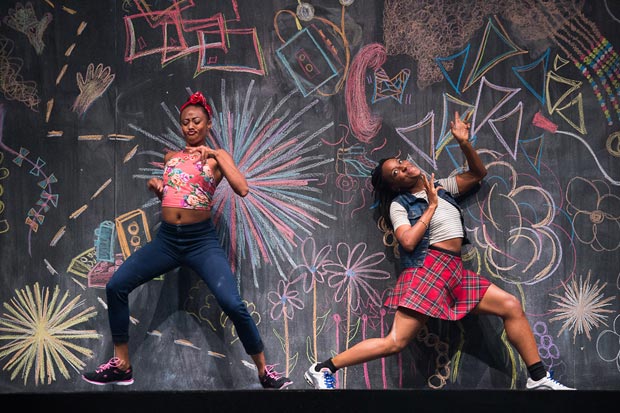
© Christopher Duggan. (Click image for larger version)
Camille A. Brown & Dancers
Black Girl: Linguistic Play
New York, The Joyce
24 September 2015
www.camilleabrown.org
www.joyce.org
There are many calls and responses layered within Camille A. Brown’s Black Girl: Linguistic Play. The title itself is one of these calls, daring audiences to respond by simply showing up. “Who is going to show up for black girls?” Brown asks. She has boldly called her piece exactly what it is, an exploration of the nuances of black girlhood through play.
Brown’s stage resembles a school playground, or a hometown block, or your neighborhood basketball court. If Black Girl’s power comes from its specificity, its nostalgia comes from its universality. It is easy not to notice the mirrors hanging above the stage’s many platforms, but when an arm, a leg, a body, a duet is reflected in them, they are a powerful reminder that this is a story about black girls told by black girls (women) through the eyes of black girls (women). We don’t get those stories nearly enough.

© Christopher Duggan. (Click image for larger version)
Three duets span the piece, each exploring a different layer of black girl identity. Brown and Catherine Foster seem to be the youngest, the most playful. They hopscotch, nae-nae, fan themselves and swirl their hips without caution. When they play numbers games, with intricate and complex footwork inspired by juba, a precursor of tap developed by slaves, they look in each other’s eyes as if they are having a conversation. And they are, really.
The score, by pianist Scott Patterson and bassist Tracy Wormworth, is soft and understated. Brown and Foster sometimes groove to the quiet piano, but mostly they’re just getting lost in their own grooves. For Beatrice Capote and Fana Fraser, grooves become more performative, as if there is another gaze (presumably male) present. They squirm and grind, fighting for attention and space. There is reconciliation and tenderness in the final duet, in which Mora-Amina Parker and Yusha-Marie Sorzano feel like mother and daughter. Their clothing and their movement have matured, but they are still playful.
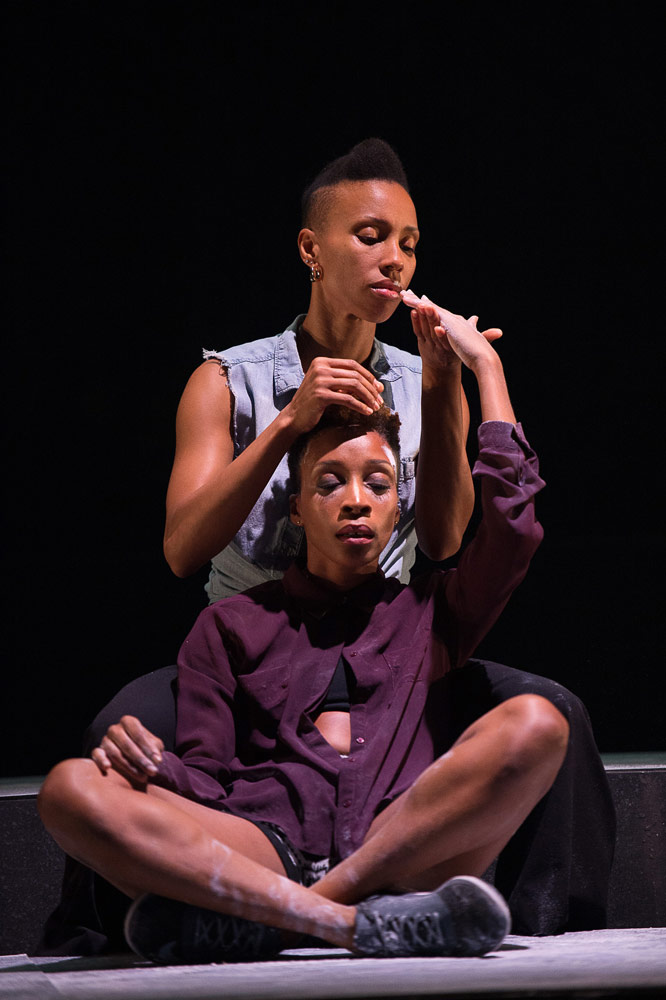
© Christopher Duggan. (Click image for larger version)
Bold, too, is Brown’s insistence that the talkback is part of the performance, that engaging with the work is as important as viewing it. The piece speaks for itself (and apparently many thought so, as they disregarded Brown’s request that they stay for the talkback). It feels like another way of claiming ownership over her piece, of having the last word. She’s earned it.









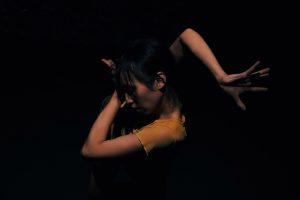


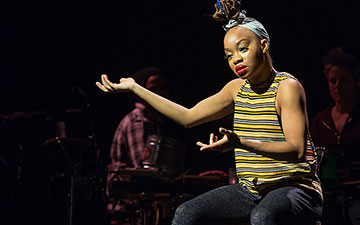

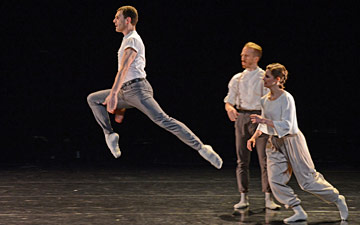
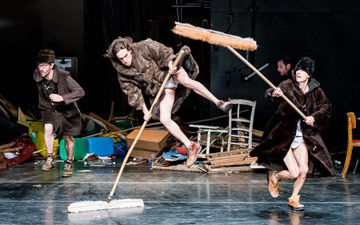
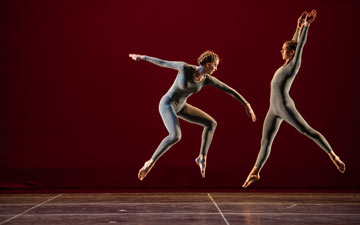
You must be logged in to post a comment.